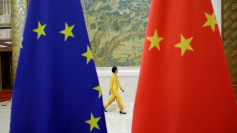As the Royal Family transitions into a new era, Princess Kate (Kate Middleton) is at the forefront, strategically redefining her public image and philanthropic focus. Following the passing of Queen Elizabeth II in September 2022, the Princess of Wales is recalibrating her persona to resonate more with contemporary society and its expectations of royal leadership.
During a playful segment on BBC Radio 1's 'Going Home' on October 10, Princess Kate's relaxed demeanor was on full display. She shared her favorite emojis - "the heart with the crying emoji [and] the hysterical laughing [one] when things have gone wrong," and lightheartedly discussed domestic life with Prince William. This moment was emblematic of her shift towards a more approachable and relatable royal image.
A source close to Kate divulged, "She's in a new phase of her life, and she wants her image and actions to reflect that. Kate used to portray the perfect, feminine wife, mother and caregiver. Now Kate wants to be seen as a powerful and kind humanitarian leader." This transition is a conscious effort by the Princess to align her public persona with her evolving role within the monarchy.
Central to her image transformation is a significant style evolution. Replacing traditional royal attire with power suits and more casual wear, Kate is keen to present herself as a leader ready to usher the monarchy into a new age. "Kate wants people to see her as a strong leader, someone who's capable of taking the title of queen into a new generation," the source explains. This shift in style is partially a preemptive measure against potential negative perceptions that might arise from the upcoming season of 'The Crown', which will explore her early years with Prince William.
Kate's passion projects, especially those focused on children's welfare and climate change, are increasingly prominent in her public agenda. Despite her growing royal responsibilities, balancing her role as a hands-on parent remains a priority. "Even on school days, helping the kids get ready in the morning and being there when they get back is the goal," the source notes. Kate's commitment to her family and causes paints a picture of a royal deeply connected to both her personal and public duties.
In the broader context of the Royal Family's public perception, particularly post-Megxit, Kate's rebranding is seen as pivotal. Her and William's increased public displays of affection are a strategic move to portray a more relatable and humanized royal family. "William and Kate were told they can be more affectionate in public if the mood strikes them," reveals the source. This shift is part of a larger strategy to honor Queen Elizabeth's legacy while charting a new path forward for the monarchy.
In essence, Princess Kate's evolution is not just a personal journey but a reflection of the monarchy's adaptation to modern times. Her blend of traditional values with a contemporary approach marks a significant step in redefining what it means to be royal in today's world.
Meankwhile, as Business Times previously reported, a deepening rift between Camilla, Queen Consort, and Kate Middleton, Duchess of Cambridge, has come to light amidst discussions of King Charles III's potential abdication due to health concerns. Sources close to the palace describe Camilla as increasingly agitated by the prospect of Charles stepping down and by Kate's rising popularity. Camilla, perceived as the "mother-in-law from hell," reportedly feels overshadowed by Kate, especially after William and Kate were named the best-dressed couple, a title that Camilla allegedly coveted.
The tension escalated following a dispute over coronation tickets, where Kate chose not to curtsy to Camilla. This act was seen as a response to most of Kate's family being excluded from the coronation, a move interpreted as a deliberate slight by Camilla.
US Weekly Spoke to the source.





